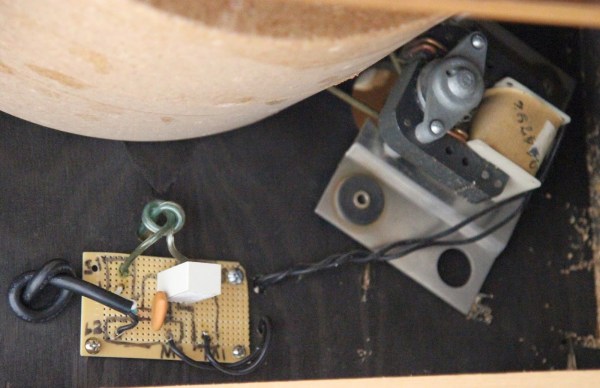It was about ten years ago that [Richard] received an old musical organ. Moving to a new house meant it would be cumbersome to move the organ with him, so he opted to harvest some interesting components instead. Specifically, he kept the Leslie speaker.
A Leslie speaker is a special kind of speaker mechanism that creates a tremolo effect as well as a vibrato effect. You can hear this effect in [Richard’s] video below. Simple effects like this would be easy to do on a computer nowadays, but that wasn’t the case several decades ago. Before digital electronics, musical effects were often performed by analog means. [Richard’s] Leslie speaker is a small speaker behind of a Styrofoam baffle. The baffle spins around the speaker which changes the reflection angle of the sound, producing the musical effect.
[Richard] tried hooking this speaker up to other musical instruments but found that turning off the electric motor created an audible pop over the speakers. To remedy this, he build a simple “snubber” circuit. The circuit is just a simple 240 ohm resister and a 0.05 uF capacitor. These components give the transients a path to ground, preventing the pops and clicks when the motor is powered up. Now [Richard] can use this classic piece of audio equipment for newer projects. Continue reading “Organ Donor Gives Up A Leslie Speaker”












